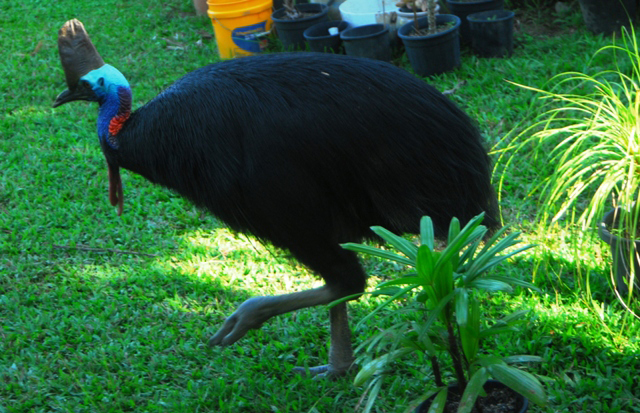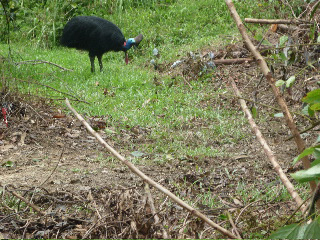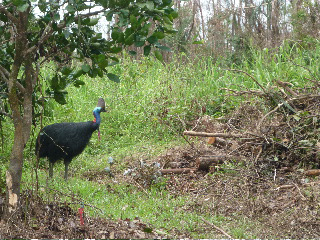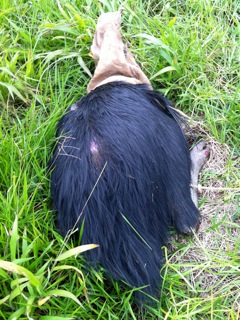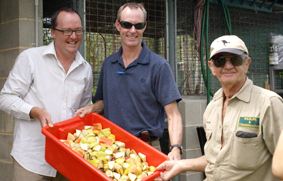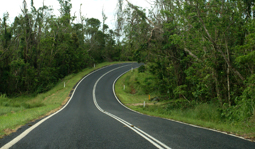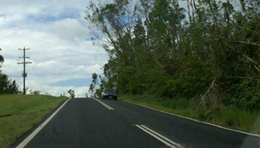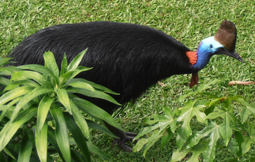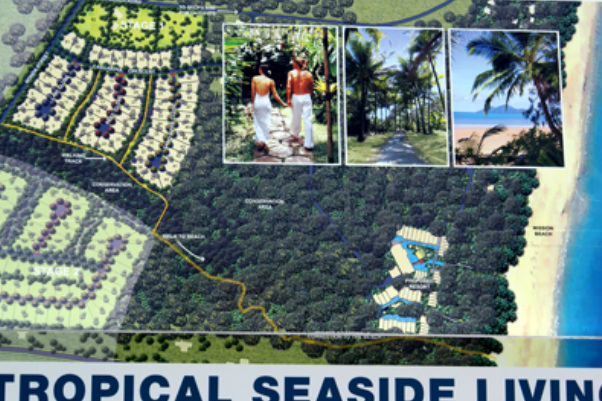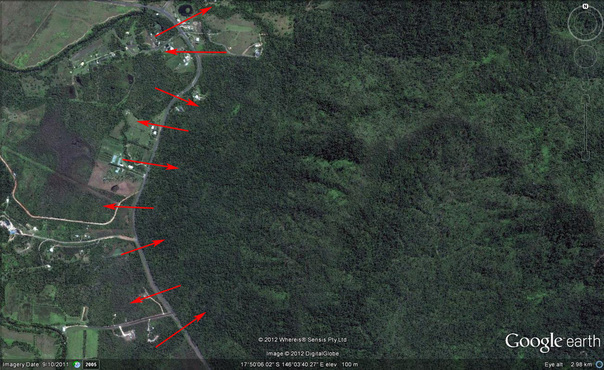| Another cassowary has been killed attempting to cross a road at Mission Beach. The adult female bird, was critically injured when she was hit by a car on Thursday 28th June on a section of road she had been crossing regularly all her life. Queensland Parks and wildlife officers (QPWS) and the local vet attended the scene. She was taken to the Garners Beach cassowary rehabilitation facility where she was euthanized on Monday 2nd July after the injuries were assessed to be too serious for the bird to recover. |
Following photos by Laurie Trott
The healthy mature bird was also known by wildlife officers who managed the food supplementary program to help cassowaries survive while the Cyclone Yasi damaged rainforest recovered enough to provide an adequate supply of native fruits.
The program was widely supported in the media and by many environment groups and individuals, locally and nationally. Bob Irwin is shown here at the Garners Beach cassowary facility with QPWS officer Andrew Millerd and Rainforest Rescue CEO, Kelvin Davies in a combined effort to help support the survival of cassowaries at Mission Beach.
"This 30 year old bird survived the most devastating cyclone to hit the coast in 100 years only to die crossing the road to access it's essential habitat" said Ms Gallie
It is the eighth recorded death along a section of road made up of tight bends with crests and dips which some motorists consider to be an 'exciting drive'.
| James Richie, who lives nearby and whose two young sons would run upstairs to watch ‘Big Top’ eat fruit from a tree in their garden, is devastated. "Both the boys got a close up view of the big bird" said James, "It was like watching a David Attenborough documentary". He said “It is like missing a friend". |
This is the second death of an adult cassowary in just three weeks at a road death hotspot identified in the JCU traffic management report* as an area of "very high cassowary mortality". * Page 266 The report makes a recommendation for immediate reduction of the speed limit to 60 and a combination of traffic calming measures. (artist impression)
The detailed report was partly funded by an offset required by the federal government to approve a development under the EPBC Act that will generate significant additional traffic flow on Mission Beach roads.
The birds will continue to cross the road in this area to access the diversity of food resources available between the mountain forest of the Djiru National Park and the freehold lowland forest areas of South Maria Creek.
“We have the report, we have the recommendations. Now we need action from the appropriate governing authorities” said Ms Gallie.
“The death of this magnificent bird, and most of the cassowary deaths occurring as a result of vehicle strike, are completely avoidable" Ms Gallie said, “So for goodness sake, if we can do it, let’s help the cassowaries cross the road safely so they can survive and thrive in their natural environment at Mission Beach”
Read more in Terrain NRM media release 'Death by a 1000 cars'
